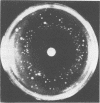Abstract
Four hexavalent and two trivalent chromium compounds were tested for toxicity and mutagenicity by means of the Salmonella typhimurium/mammalian-microsome test. All hexavalent compounds yielded a complete inhibition of bacterial growth at doses of 400 to 800 μg/plate, a significant increase of his+ revertant colonies at doses ranging from 10 to 200 μg, and no effect at doses of less than 10 μg. The distinctive sensitivity of the four Salmonella strains tested (TA1535, TA1537, TA98, and TA100) suggested that hexavalent chromium directly interacts with bacterial deoxyribonucleic acid by causing both frameshift mutations and basepair substitutions. The latter mutations, which are prevalent, are amplified by an error-prone recombinational repair of the damaged deoxyribonucleic acid. On the average, 1 μmol of hexavalent chromium yielded approximately 500 revertants of the TA100 strain, irrespective of the compound tested (sodium dichromate, calcium chromate, potassium chromate, or chromic acid). The mutagenic potency of the hexavalent metal was not enhanced by adding the microsomal fraction of rat hepatocytes, induced either with sodium barbital or with Aroclor 1254. The two trivalent compounds (chromium potassium sulfate and chromic chloride), with or without the microsomal fraction, were neither toxic nor mutagenic for the bacterial tester strains.
Full text
PDF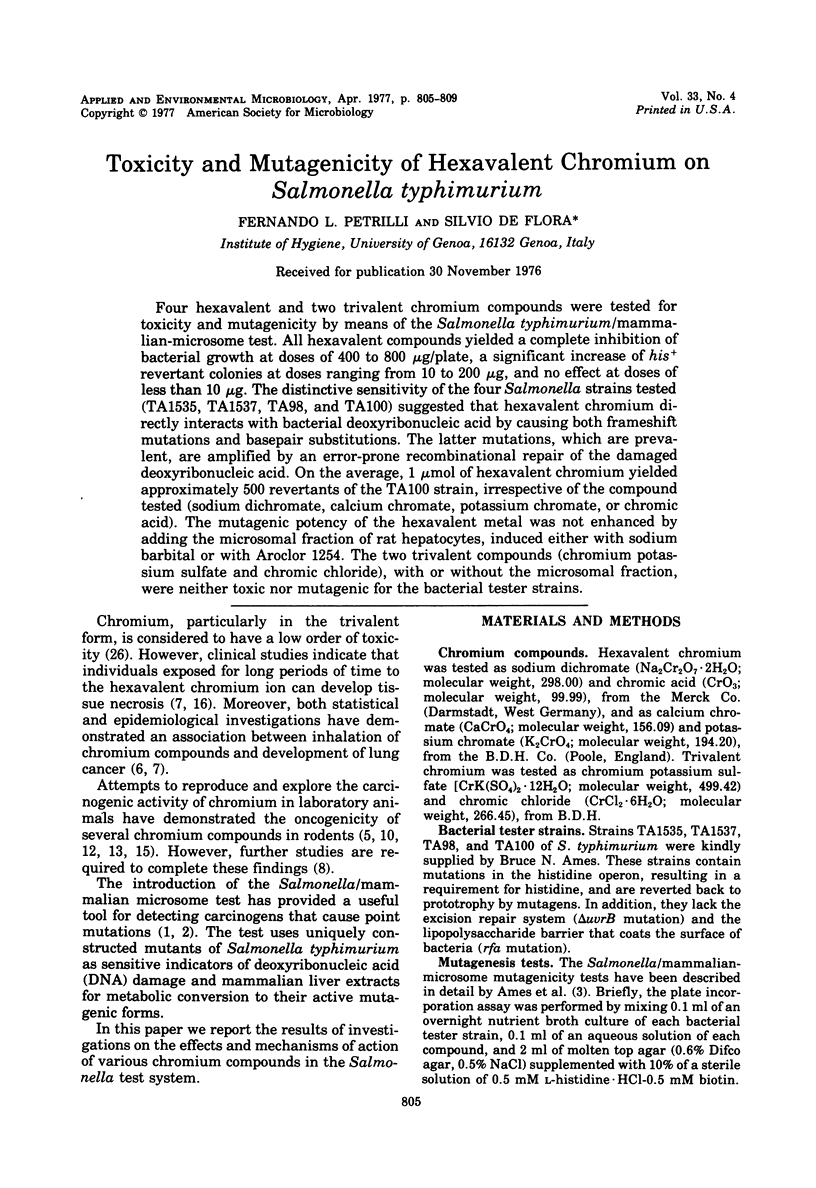

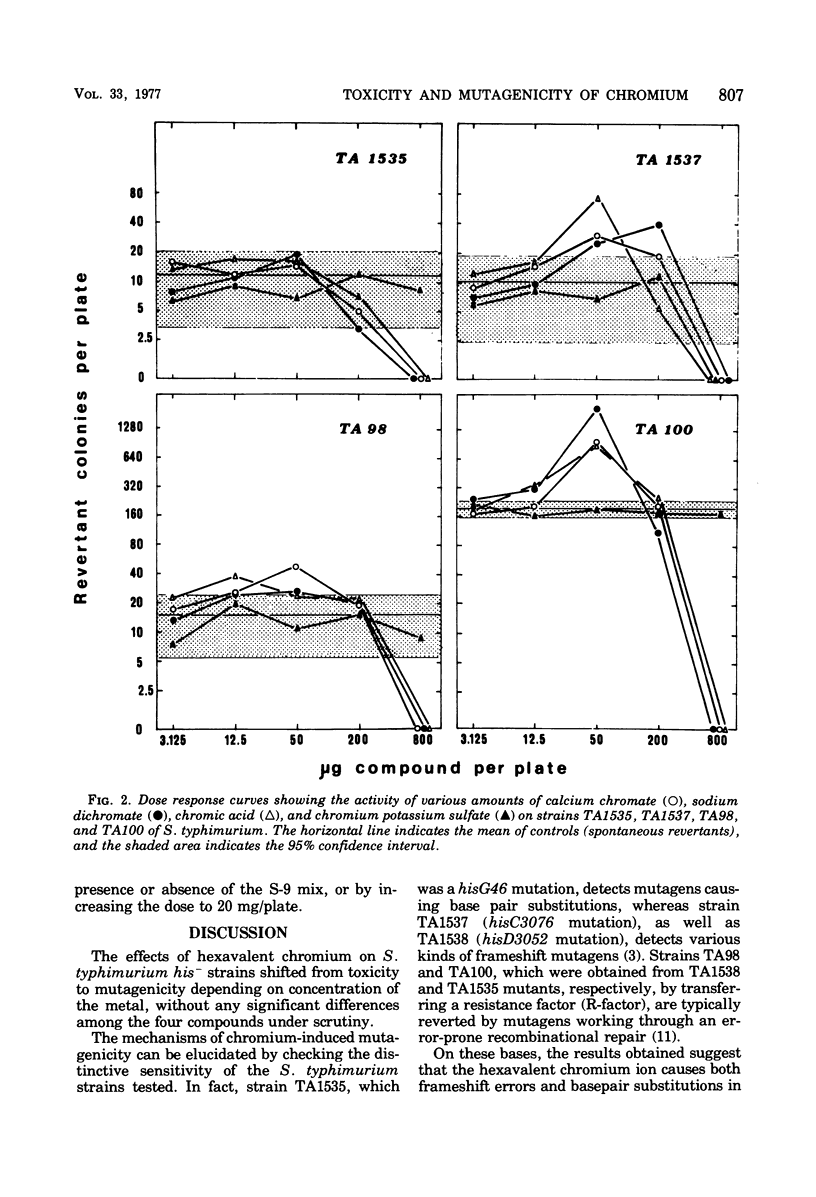
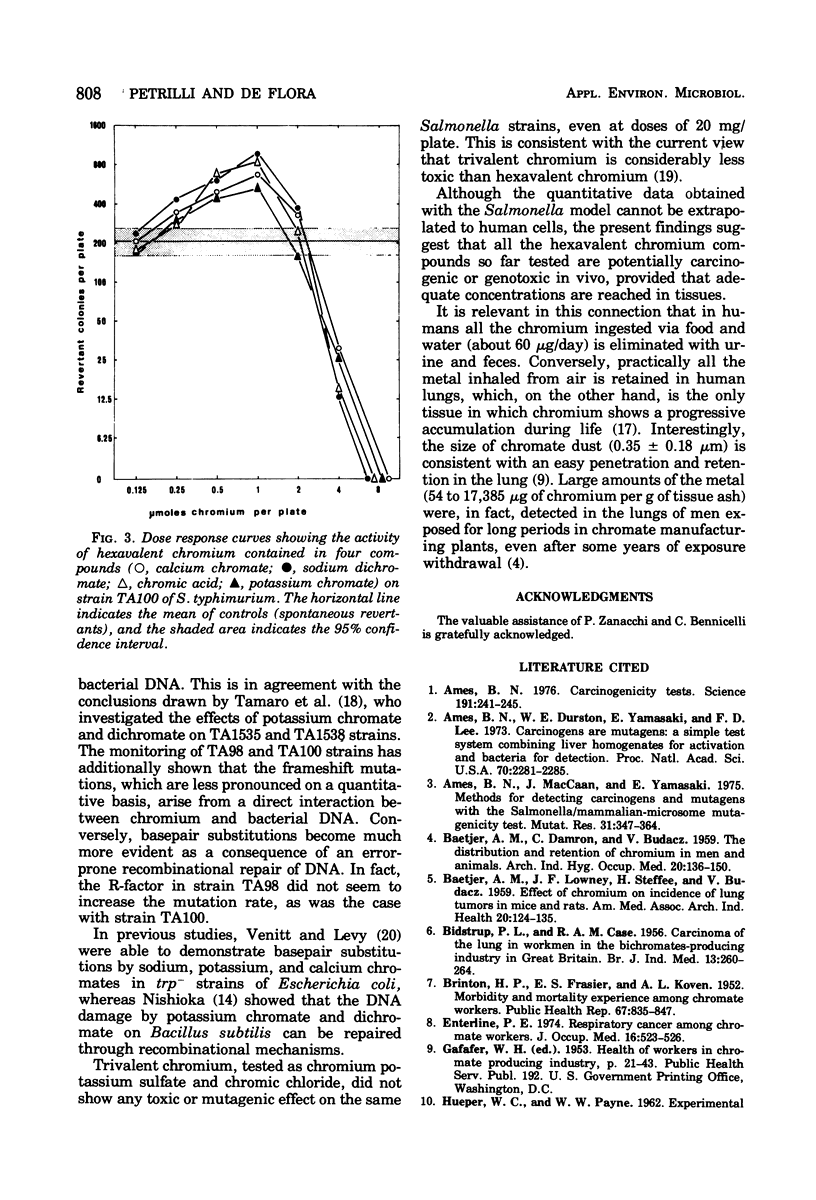
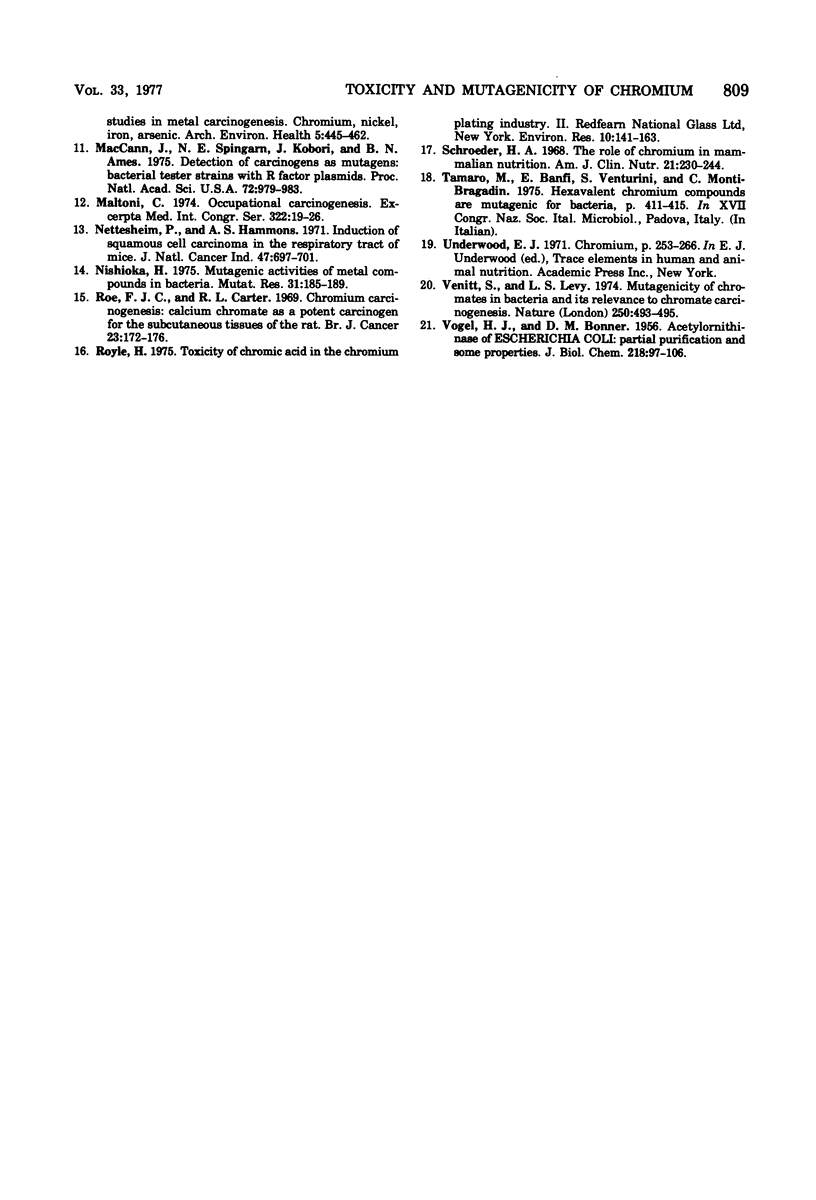
Images in this article
Selected References
These references are in PubMed. This may not be the complete list of references from this article.
- Ames B. N., Durston W. E., Yamasaki E., Lee F. D. Carcinogens are mutagens: a simple test system combining liver homogenates for activation and bacteria for detection. Proc Natl Acad Sci U S A. 1973 Aug;70(8):2281–2285. doi: 10.1073/pnas.70.8.2281. [DOI] [PMC free article] [PubMed] [Google Scholar]
- Ames B. N., Mccann J., Yamasaki E. Methods for detecting carcinogens and mutagens with the Salmonella/mammalian-microsome mutagenicity test. Mutat Res. 1975 Dec;31(6):347–364. doi: 10.1016/0165-1161(75)90046-1. [DOI] [PubMed] [Google Scholar]
- BAETJER A. M., DAMRON C., BUDACZ V. The distribution and retention of chromium in men and animals. AMA Arch Ind Health. 1959 Aug;20(2):136–150. [PubMed] [Google Scholar]
- BAETJER A. M., LOWNEY J. F., STEFFEE H., BUDACZ V. Effect of chromium on incidence of lung tumors in mice and rats. AMA Arch Ind Health. 1959 Aug;20(2):124–135. [PubMed] [Google Scholar]
- BIDSTRUP P. L., CASE R. A. Carcinoma of the lung in workmen in the bichromates-producing industry in Great Britain. Br J Ind Med. 1956 Oct;13(4):260–264. doi: 10.1136/oem.13.4.260. [DOI] [PMC free article] [PubMed] [Google Scholar]
- BRINTON H. P., FRASIER E. S., KOVEN A. L. Morbidity and mortality experience among chromate workers. Public Health Rep. 1952 Sep;67(9):835–847. [PMC free article] [PubMed] [Google Scholar]
- Enterline P. E. Respiratory cancer among chromate workers. J Occup Med. 1974 Aug;16(8):523–526. [PubMed] [Google Scholar]
- HUEPER W. C., PAYNE W. W. Experimental studies in metal carcinogenesis. Chromium, nickel, iron, arsenic. Arch Environ Health. 1962 Nov;5:445–462. doi: 10.1080/00039896.1962.10663311. [DOI] [PubMed] [Google Scholar]
- McCann J., Spingarn N. E., Kobori J., Ames B. N. Detection of carcinogens as mutagens: bacterial tester strains with R factor plasmids. Proc Natl Acad Sci U S A. 1975 Mar;72(3):979–983. doi: 10.1073/pnas.72.3.979. [DOI] [PMC free article] [PubMed] [Google Scholar]
- Nettesheim P., Hammons A. S. Induction of squamous cell carcinoma in the respiratory tract of mice. J Natl Cancer Inst. 1971 Sep;47(3):697–701. [PubMed] [Google Scholar]
- Nishioka H. Mutagenic activities of metal compounds in bacteria. Mutat Res. 1975 Jun;31(3):185–189. doi: 10.1016/0165-1161(75)90088-6. [DOI] [PubMed] [Google Scholar]
- Roe F. J., Carter R. L. Chromium carcinogenesis: calcium chromate as a potent carcinogen for the subcutaneous tissues of the rat. Br J Cancer. 1969 Mar;23(1):172–176. doi: 10.1038/bjc.1969.25. [DOI] [PMC free article] [PubMed] [Google Scholar]
- Royle H. Toxicity of chromic acid in the chromium plating industry(2). Environ Res. 1975 Aug;10(1):141–163. doi: 10.1016/0013-9351(75)90079-1. [DOI] [PubMed] [Google Scholar]
- Schroeder H. A. The role of chromium in mammalian nutrition. Am J Clin Nutr. 1968 Mar;21(3):230–244. doi: 10.1093/ajcn/21.3.230. [DOI] [PubMed] [Google Scholar]
- VOGEL H. J., BONNER D. M. Acetylornithinase of Escherichia coli: partial purification and some properties. J Biol Chem. 1956 Jan;218(1):97–106. [PubMed] [Google Scholar]
- Venitt S., Levy L. S. Mutagenicity of chromates in bacteria and its relevance to chromate carcinogenesis. Nature. 1974 Aug 9;250(5466):493–495. doi: 10.1038/250493a0. [DOI] [PubMed] [Google Scholar]



